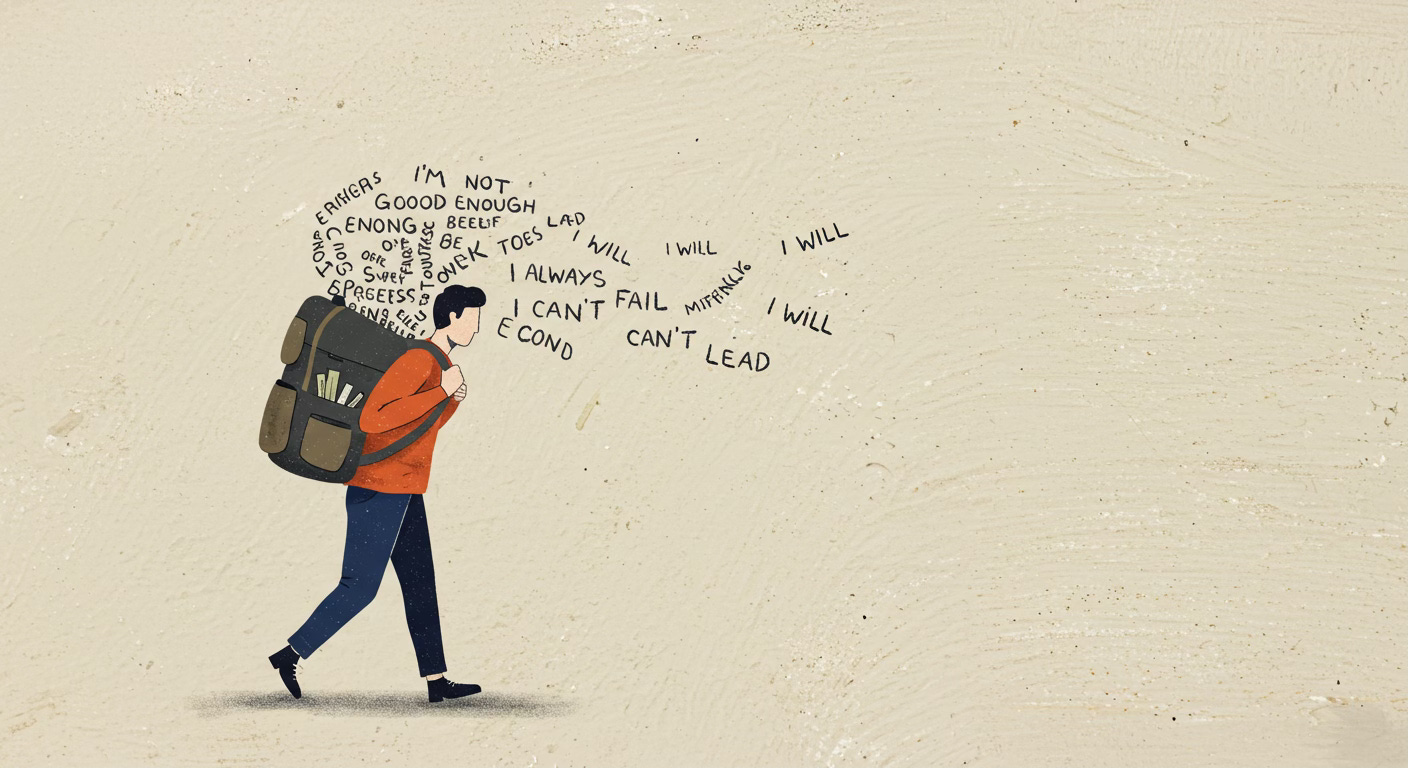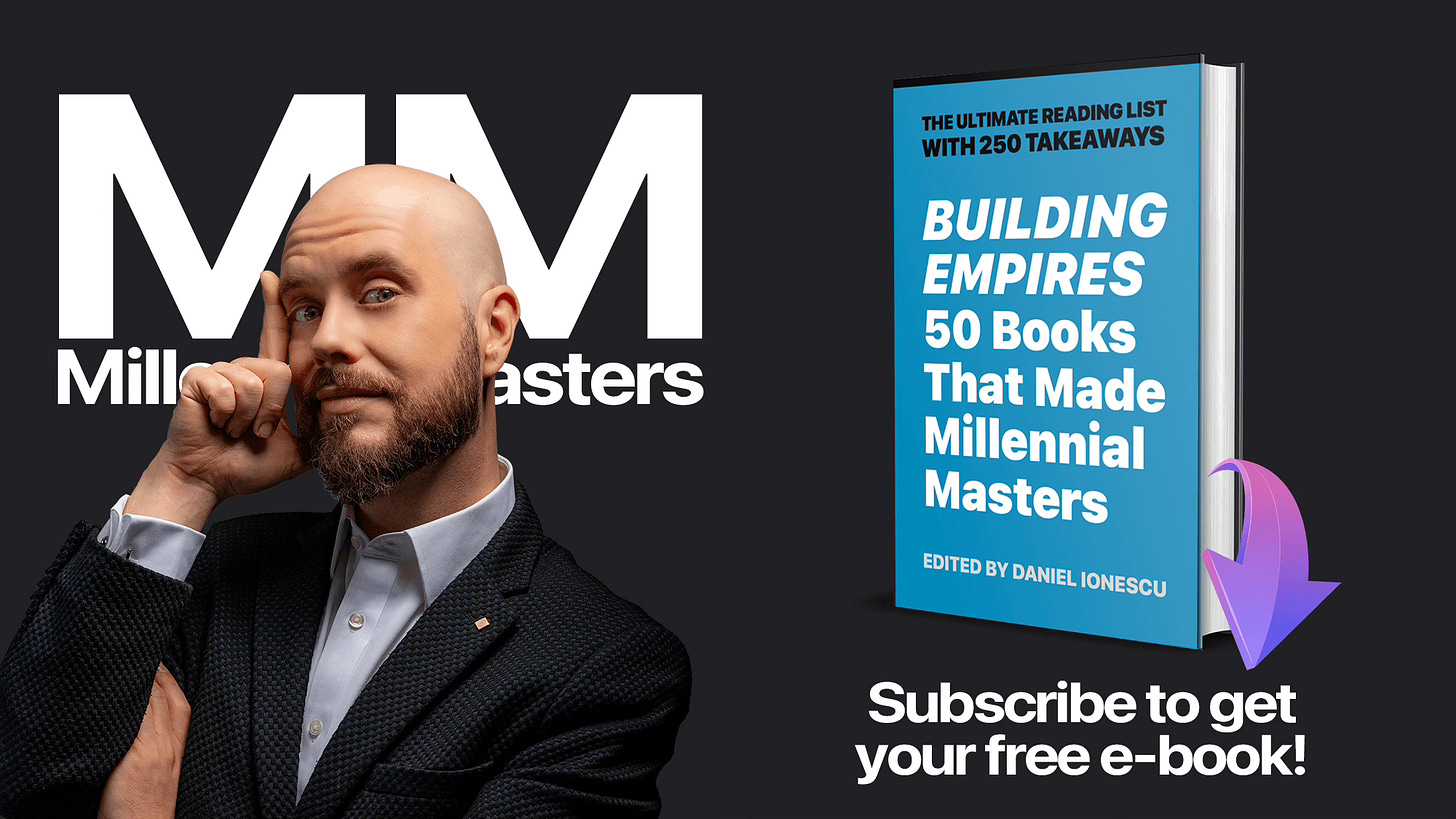Your words are working against you 🔑 here’s how to fix it
The subconscious power of language and how to use it to your advantage

The way we speak, both out loud and in our heads, shapes how we see the world, make decisions, and ultimately, determine our success. Often, we don’t even realise the unconscious beliefs our words expose. These hidden assumptions guide our choices, limit our potential, and reinforce habits we don’t even question.
But here’s the good news: once you spot these patterns, you can change them. In this guest post from Sean Barkes, a seasoned business and endurance coach, he’s breaking down how language influences your mindset, your actions, and your results — plus, he shares practical ways to rewrite your internal script for better outcomes.
Millennial Masters is brought to you by Jolt ⚡️ The UK’s top web hosting service
The nature of language: More than just words
Language isn’t just what we say, it’s how we say it. Every conversation is layered with verbal and non-verbal cues that reveal what’s really going on beneath the surface. Our tone, facial expressions, posture, and gestures all add extra meaning, whether we intend them to or not.
Here’s how this plays out in everyday interactions:
Verbal cues: The words you choose can subtly undermine or reinforce confidence. Saying “I’ll try” or “I hope” sounds tentative, whereas “I will” signals commitment. Likewise, “I can’t make it” might hint at avoidance, while “I won’t be available” takes ownership of the decision.
Non-verbal cues: Body language often betrays what words alone don’t. Crossed arms, lack of eye contact, or a hesitant tone can contradict an otherwise positive statement. Someone might say “That sounds great” while subconsciously leaning away, signalling discomfort or doubt.
Becoming aware of these hidden signals helps align what you mean with what you express, making your communication clearer, more intentional, and more effective.
How unconscious beliefs shape perception
Our beliefs act like mental filters, shaping how we see the world and react to it. Sometimes they help us move forward, other times they quietly hold us back. The tricky part? We don’t always realise they’re running the show.
Limiting beliefs: Ever heard someone say, “I’m just not good at public speaking”? That’s not a fact, it’s a story they’ve told themselves, probably based on one bad experience. But the more they repeat it, the more it cements itself as truth, closing the door on opportunities before they even try.
Empowering beliefs: Swap that for “I can get better at this” and suddenly, the door isn’t locked. It’s a shift from fear to possibility, from fixed mindset to growth.
Psychologists like Aaron Beck and Albert Ellis have spent decades proving that changing thought patterns changes outcomes. Their research in cognitive restructuring shows that identifying and challenging negative beliefs can improve everything from confidence to performance. The first step? Noticing the narratives you’re running on — and deciding if they’re helping or holding you back.
The mind-body-language connection
We’re not just brains walking around in bodies: everything is connected. Your thoughts influence your posture, your words shape your emotions, and your physical state can reinforce or break patterns in your mind.
Your body gives you away: Stress doesn’t just stay in your head. Tight shoulders, clenched jaw, shallow breathing — it’s all a physical reflection of what’s going on internally. Chronic tension isn’t just about bad posture; it’s often a sign that your mind is carrying a load too heavy to ignore.
Words create reality: The way we talk about things shapes how we experience them. Say “This is a nightmare” and your brain responds with stress. Call it a “challenge” or even an “opportunity” and suddenly, you’re in problem-solving mode instead of panic mode. Research in cognitive linguistics proves this: our metaphors literally frame how we process and react to the world.
Understanding this loop — how thoughts, words, and physical cues feed into each other — means you can start hacking it. Change the language, shift the mindset, adjust the body, and suddenly, you’re in control of more than you think.

Intentional language: How to rewire your mind
It’s the way you speak, internally and externally, that shapes your confidence, decisions, and outcomes. Small shifts in language create big shifts in mindset.
Reshape the story: The words you choose frame your reality. Saying “That didn’t work” keeps the focus on progress, while “I failed” shuts the door on growth. Research in cognitive-behavioural therapy (CBT) shows that rewording negative thoughts reduces stress and builds resilience.
Own your presence: Body language feeds into belief. Standing tall, using open gestures, and holding steady eye contact reinforce confidence from the outside in.
Be direct: Hedging weakens authority. Swap “I think I might” for “I will”. Replace “Maybe I can” with “I can”. The way you phrase ideas influences perception, both yours and others’.
How coaching reveals the patterns you don’t see
Most limiting beliefs run on autopilot: so ingrained they feel like facts. Coaching helps bring them to the surface by:
Spotting the language traps: The way you phrase challenges can reveal the beliefs holding you back. A coach listens for patterns like “I’m just not a leader” or “I could never charge that much” and helps you reframe them.
Introducing new perspectives: A fresh set of eyes challenges assumptions. What feels like a dead end might just need a different route.
Testing new language in real time: Shifting the way you speak in a supportive space makes it easier to apply in high-stakes situations, whether that’s a pitch, a tough conversation, or your own self-talk.
Coaches don’t hand out solutions. They hold up a mirror, ask better questions, and help you rewrite the internal scripts shaping your decisions.
The power of intent: Lessons from Chinese philosophy
In traditional Chinese thought, Yi (意) — or intent — bridges the gap between thought, action, and outcome. It’s not just a concept but a force that directs energy and movement, shaping everything from martial arts to leadership.
Practices like T’ai Chi Ch’uan (Taijiquan) and Ch’i Kung (Qigong) teach that where the mind leads, the body follows. Focused intent refines physical movements, creating alignment between thought and action. The same principle applies beyond martial arts: when you communicate with clarity and purpose, people respond with trust and alignment.
A martial artist executing a movement with intent achieves precision and impact. A leader who speaks with clear purpose commands attention and drives action. Whether in combat, business, or personal growth, intention sharpens execution — turning words and gestures into something that truly moves people.

Real-world shifts: How language shapes confidence and performance
The hesitant executive
A senior manager had a habit of hedging every statement with, “I’m not sure, but…” It seemed harmless, until it became clear that this pattern was eroding confidence, both in their leadership and across the team. Through coaching, they uncovered the root of the issue: a fear of being wrong. The fix? A shift in language. Instead of defaulting to uncertainty, they began leading with, “Based on my experience, I recommend…” The result? Stronger communication, better decision-making, and a team that trusted their leadership.
The overwhelmed athlete
An endurance runner constantly told themselves, “I’m not fast enough to compete.” The words were reinforcing self-doubt with every training session. Coaching revealed the belief came from endless comparisons to others. By shifting the focus to progress rather than perfection, they started using affirmations like, “I’m improving with every session.” That subtle tweak changed everything: confidence grew, training became more rewarding, and performance naturally followed.
Practical ways to shift your language and mindset
Notice your patterns
For one day, pay attention to the words you use, especially in conversations about challenges or ambitions. Are you unconsciously downplaying yourself with phrases like “I’ll try” or “Hopefully, it works”? Note them down and experiment with stronger alternatives. Swap “I hope this works” for “I’ve prepared for this, and I’m ready.” See how it shifts your mindset.
Own the room without saying a word
Body language speaks louder than you think. Next time you’re in a meeting or presenting an idea, adopt a strong posture: shoulders back, steady eye contact, no fidgeting. Confidence isn’t just a feeling; it’s a practice. You’ll notice not only a shift in how others respond to you but also in how you feel about yourself.
Set the tone before a challenge
Before tackling a big task, set a clear intention. Instead of entering a negotiation thinking, “I hope this goes well”, step in with “I’m bringing my expertise to the table.” Your words shape your reality, so use them with purpose.
Rewiring your language, reshaping your reality
Every word we choose reinforces a belief. Some push us forward, others hold us back. But by paying closer attention to the language we use, we start to see where we’re holding ourselves back and where small shifts can open up new possibilities.
Confidence grows when we speak with clarity. Challenges feel different when we frame them as opportunities. Intentionality in our words creates momentum in our actions.
Try it. Observe. Experiment. A single change in language today could be the first step towards a completely different outcome.
👤 About Sean Barkes
Sean Barkes is an experienced coach with a deep understanding of executive leadership, business growth, personal development, and endurance training. With a background spanning executive coaching, health and well-being, and high-performance training, Sean integrates science-backed strategies with wisdom drawn from philosophy and Traditional Chinese Medicine. His lifelong study of disciplines like T’ai Chi Ch’uan and Ch’i Kung adds a unique dimension to his coaching, linking the mind-body connection and the power of focused intent.
Through Refinity Coaching, Sean is helping leaders, athletes, and individuals cut through limiting beliefs, refine their strengths, and turn challenges into opportunities. Whether guiding a CEO towards sharper decision-making, supporting an athlete in breaking mental barriers, or helping someone redefine their personal narrative, Sean’s work is about transformation: one conversation, one shift in thinking, one intentional action at a time.







Would love to debate and understand these guys!